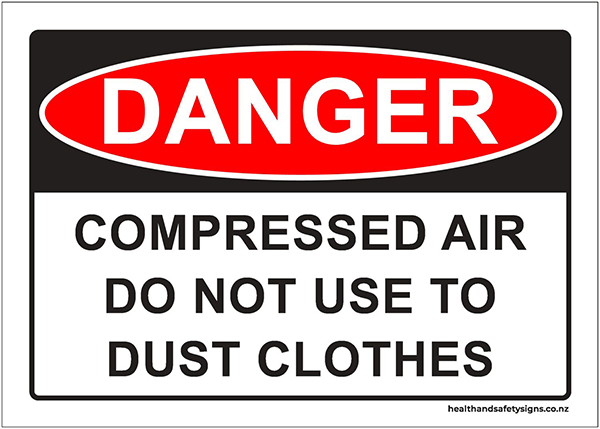Safety precautions to take when working with air receivers
When working with air receivers/pressure vessels, there are questions you should ask yourself:
- Is the air receiver certified for the site?
- Is a safety relief valve installed and operational?
Air receivers can be dangerous so these safety precautions should be taken when working near them:
Protect your ears
Avoid the dumping of air without the appropriate hearing protection or when other people are in the vicinity.
If employees in your workplace are exposed to noise that exceeds the exposure standard of 85 dB(A) averaged over an eight-hour period or that has a peak noise level of 140 dB(C), your workplace is too noisy and controls must be implemented to ensure noise exposure does not exceed the standard.
Furthermore, if any of the following occurs, noise controls are likely to be required:
• employees have to raise their voices to communicate at a distance of one metre
• employees have a temporary reduction in hearing or ringing in their ears after leaving work for the day.
Keep the compressed air site clean
By implementing a good housekeeping plan, workplaces can be kept clean and free of waste. You can reduce the risk of injuries occurring due to slips, trips and falls, as well as injuries resulting from hitting stationary objects. A tidy, well laid out workplace can also increase work efficiency.
Space around the air receiver needs to be kept clean and free of combustibles so as to prevent the likelihood of fire.
Keep a record
When Compressed Air Controls installs the air receiver, or takes over the servicing of the site, they will make sure you know what you are required to keep a record off.
The records kept in relation to inspection and maintenance should contain the following information as a minimum:
1. What is looked at?
2. What is looked for?
3. What are the rejection/acceptance criteria?
4. How is it looked for?
5. What is found?
6. What recommendations are made, eg future inspections, repairs or changes to current operating procedures and parameters?
7. Actions taken based on those recommendations
Keep an eye out
• Pre-operational and operational surveillance and monitoring − regular surveillance is an essential part of the operation of all air receivers. This must include checking and monitoring all safety devices, visual observation, as well as monitoring for abnormalities, including odours and temperature extremes.
Manual provided and read
• Employer provides an operator’s manual that includes the manufacturer’s recommendations.
• Employer ensures the employee understands the instructions given in the operator’s manual.
Training
• Employer ensures employees are trained on the specific plant in use at the workplace, including:
– lockouts and tag outs
– safety devices
– isolation points
– operation
– inspection and maintenance requirements
Work safely
• Operators have been inducted and are familiar with the area they will be working in.
• Supervisor ensures that operators are familiar with any operating procedures and other site rules, including:
– emergency and evacuation procedures
– procedures for reporting faults, hazards and risks
• Operators are trained and competent.
• Appropriate safety supervision is provided for compressed air work.
• All malfunctions and hazards are recorded in the logbook and Compressed Air Controls is contacted to repair it.
• Unsafe plant is appropriately disabled, tagged out, electrically isolated, energy discharged and not operated.
• Plant is operated within its limits.
Pre-operational checks are conducted prior to use.
• Safety devices are constantly monitored while the air receiver is in operation.
• Access platforms are provided where required.
• Air receivers are drained frequently to prevent build-up of contaminants.
• Air lines and hoses are frequently inspected for defects.
• Defective air lines and hoses are not used and are repaired or replaced immediately.
• Air lines and hoses are checked to make sure they are properly connected to pipe outlets before use.
• Air hoses have safety couplings which shut off the air flow when not coupled to a fitting.
• Safe work method statements are clearly displayed to prevent employees from using compressed air to clean dust from clothing.
• Air hoses are not bent or kinked.
• Air hoses are placed in the appropriate storage systems when not in use
Safety devices are monitored regularly.
• Safety devices are inspected and tested regularly.
• Malfunctions, faults, and unusual events are reported immediately.
• Air compressor plant is only operated by authorised and trained personnel.
• Air compressors are used only according to the manufacturer’s recommendations.
Defects are logged and locked out
• Defective plant is noted in the logbook and reported to the supervisor or an authorised person.
• Defective plant is locked out, tagged out, clearly marked as faulty, and rendered unusable pending a decision on how serious the fault is and whether the plant is repairable.
• The compressed air system is switched off, discharged of energy, and locked in position before maintenance.
• Each person involved in the maintenance work attaches their own lock to the appropriate switch.
• No person is able to remove another person’s lock.
• Access platforms are provided for servicing air receivers where required:
– checking pressure relief valve
– testing pressure relief valve
– checking for external corrosion
• Contact Compressed Air Controls to conduct maintenance, recommissioning and testing.
